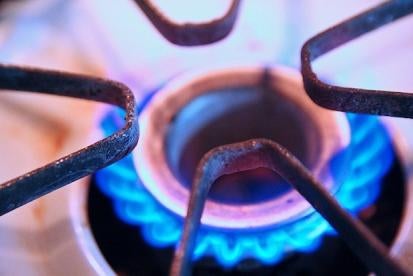On March 17, the Pipeline and Hazardous Materials Administration (PHMSA) published a Notice of Proposed Rulemaking proposing significant, far-reaching changes to natural gas pipeline safety regulations. The proposed rule comes five years after Congress directed PHMSA to consider updating its pipeline safety rules in the wake of a number incidents, including the fatal 2010 San Bruno, California, pipeline explosion.
According to PHMSA administrators, the proposed rule is meant to “address the emerging needs of America's natural gas pipeline system and adapt and expand risk-based safety practices to pipelines located in areas where incidents could have serious consequences.” The proposed rule will undoubtedly have serious consequences for the pipeline industry. Compliance with the rule, as proposed, would involve significant upfront costs and service disruptions, despite the fact that owners’ and operators’ own safety practices have already significantly reduced pipeline incidents since 2011.
The proposed rule expands PHMSA’s regulatory reach significantly. First, PHMSA now seeks to regulate pipelines constructed prior to 1970, which were previously exempt from PHMSA oversight. These regulations include verification of pipeline material, verification of maximum allowable operating pressure (MAOP), and further testing requirements. Compliance may prove challenging and costly for operators of older pipelines due to the difficulty of locating historic records.
Second, the proposed rule imposes additional requirements in currently regulated areas. The rule contains numerous new integrity management (IM) requirements, including:
-
Revised IM repair criteria for pipeline segments in high consequence areas (HCAs) to address cracking defects, non-immediate corrosion metal loss anomalies, and other defects
-
Functional requirements related to the nature and application of risk models
-
Specific requirements for collecting, validating and integrating pipeline data models
-
More stringent requirements for applying knowledge gained through IM Program models
-
More stringent requirements for the selection and use of direct assessment methods
-
Requirements for monitoring gas quality and mitigating internal corrosion, as well as requirements for external corrosion management programs, including above ground surveys, close interval surveys, and electrical interference surveys
-
Additional requirements for management of change
The proposed rule also seeks to apply certain HCA IM requirements to newly-defined “moderate consequence areas” (MCAs), which are “onshore area[s] that [are] within a potential impact circle… containing five or more buildings intended for human occupancy, an occupied site, or a right-of-way for designated interstate, freeway, expressway, and other principal 4-lane arterial roadway.”
Although pipelines in MCAs would not be subject to the same set of regulatory requirements as those in HCAs, owners and operators would still be required to conduct periodic integrity assessments, remediate discovered defects, and complete material documentation and MAOP verification. PHMSA recognizes that MCA requirements would entail significant implementation and compliance costs, however, and has specifically requested comments on the potential safety benefits, avoided lost gas, economic costs and operational considerations involved.
Third, the proposed rule includes several non-integrity management-related changes, including additional requirements for:
-
Monitoring gas quality, mitigating internal corrosion, and creating external corrosion management programs, including above ground surveys, close interval surveys, and electrical interference surveys
-
Management of change
-
Mandatory integrity assessments
-
Repair criteria for pipeline segments not located in an HCA
-
Verification of MAOP and verification of pipeline material for certain onshore, steel gas transmission pipelines, including establishing and documenting MAOP if the pipeline MAOP was established by the highest actual operating pressure the segment was subjected to between July 1, 1965, and July 1, 1970, or if the pipeline meets other criteria indicating a need for establishing MAOP
Fourth, PHMSA proposed changes to its gas gathering lines regulatory scheme. The proposed rule:
-
Changes the definitions of “gathering lines” and “onshore production facility/operation.” The new gathering lines definition would classify a line as a gathering line earlier in the production process and reduce the scenarios where a line would be considered incidental gathering, instead of transmission
-
Expands pre-existing damage protection and planning requirements to a greater subset of gathering line types
-
Repeals the use of American Petroleum Institute’s Recommended Practice 80—currently incorporated by reference in 49 C.F.R. Part 192—for determining regulated onshore gathering lines because of the potential for misapplication of this complex standard during an operator’s determination of an incidental gathering line
-
Requires all gathering line operators of onshore gas gathering lines, including unregulated lines, to file annual incident and safety-related conditions reports
In addition to these new requirements, PHMSA stated in the proposed rule it would not rule out imposing IM and/or internal corrosion requirements to gathering lines. These gathering line regulations represent a significant expansion of PHMSA’s authority and would expose thousands of miles of gathering pipelines to new or more stringent regulations.
Finally, the proposed rule also covers other areas outside of the pipeline integrity context, including:
-
Requiring inspections by onshore pipeline operators of areas affected by an extreme weather event such as a hurricane, flood, landslide, earthquake, natural disaster or other similar event
-
Adding requirements to ensure consideration of seismicity of the area in identifying and evaluating all potential threats
-
Revising the regulations to allow extension of the seven year reassessment interval upon written notice
-
Adding a requirement to report each exceedance of the MAOP that exceeds the margin (build-up) allowed for operation of pressure-limiting or control devices
-
Adding regulations to require safety features for pipeline launchers and receivers
-
Incorporating consensus standards into the regulations for assessing the physical condition of in-service pipelines using in-line inspection
PHMSA estimates that, over a 15-year period, the total cost to implement the rule changes would be approximately $597 million ($39.8 million/year) using a 7% discount rate, or $711 million ($47.4 million/year) using a 3% discount rate. In addition to upfront implementation costs, enactment of the proposed rule could result in service disruptions as pipeline owners and operators work to update their pipeline systems. Finally, costs of compliance with the proposed rule could potentially affect shippers on pipelines as well as operators themselves, as the Federal Energy Regulatory Commission has allowed many interstate transmission pipelines to pass along costs attributable to safety measures directly to shippers.
Despite the fact that the proposed rule contemplates substantial and costly changes to the pipeline regulatory regime, parties will have only 60 days to comment on the proposed rule once it is published in the Federal Register. Although industry groups have requested an extension of time, it is unlikely that parties will be granted significant extensions to review and analyze the proposed rule and, therefore, interested parties should begin their analysis without delay.






 i
i

